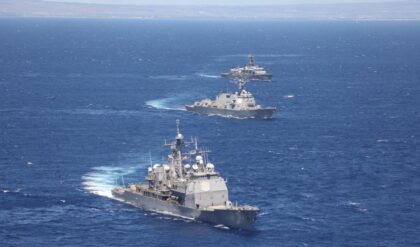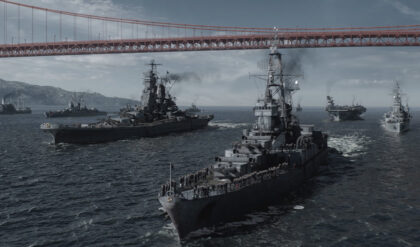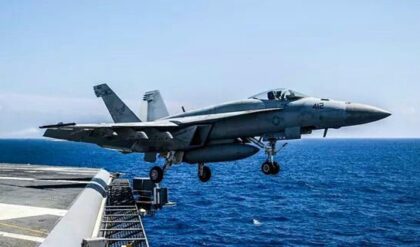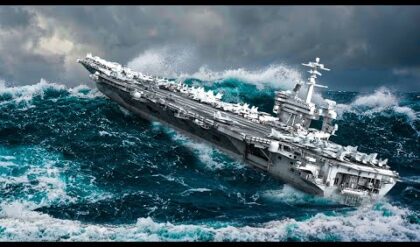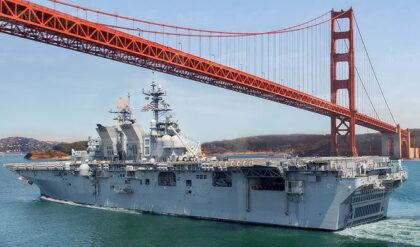The concept of the Fairey Rotodyne emerged in post-war Britain, a time when both civil and military aviation were undergoing rapid advancements.

Fairey Aviation, a company with a rich history in aircraft production, including notable contributions during World War II, aimed to develop an aircraft that could combine the vertical takeoff and landing (VTOL) capabilities of a helicopter with the speed and range of a conventional airplane. This led to the creation of the Rotodyne, a project that promised to revolutionize short-haul air transport.
The development of the Rotodyne was a continuation of Fairey’s earlier experiments with rotorcraft, including the Fairey Gyrodyne and Jet Gyrodyne, which were significant in advancing rotorcraft technology. The Gyrodyne, in particular, had set a helicopter speed record, laying the groundwork for the Rotodyne’s development.
Origins and Development
From the late 1930s, a new era of aeronautics began with advances in rotary-wing aircraft. Britain’s progress in rotorcraft development was slow before World War II. The war shifted aviation industry priorities, sidelining British rotorcraft programs.
 The Fairey Rotodyne prototype circa 1959
The Fairey Rotodyne prototype circa 1959
Post-war, the RAF and Royal Navy chose Sikorsky R-4 and R-6 helicopters, known as Hoverfly I and II. These rotorcraft, along with studies of captured German helicopters, sparked interest in British advanced rotorcraft development.
Fairey Aviation, intrigued by rotary-wing potential, developed the Fairey FB-1 Gyrodyne under Specification E.16/47. This unique aircraft blended autogyro safety with helicopter hovering capabilities.
Dr. JAJ Bennett, formerly of Cierva Autogiro Company, characterized it as an intermediate aircraft. Its rotor operated in all flight phases, with automatic collective pitch and a side propeller for thrust and rotor torque correction.
On June 28, 1948, the FB-1 set a world airspeed record of 124.3 mph (200.0 km/h). However, the program faced challenges, including a fatal prototype accident in April 1949. The second FB-1, modified into the Jet Gyrodyne, explored a tip-jet driven rotor with stub-wing-mounted propellers.
In 1951-52, British European Airways (BEA) envisioned a passenger rotorcraft, the Bealine-Bus. They sought a multi-engined, short-haul airliner for city-to-city travel, carrying at least 30 passengers. The Ministry of Supply supported this with design studies, anticipating such rotorcraft in Britain’s transport network.
Various futuristic designs were proposed for the BEA Bus. Fairey’s submissions showed promise, varying in powerplants and capacity.
 One of the few surviving parts of the dismantled prototype
One of the few surviving parts of the dismantled prototype
They first approached the Ministry on January 26, 1949. By March, Fairey had offered three more proposals, considering Rolls-Royce Dart and Armstrong Siddeley Mamba engines. In October 1950, a development contract was awarded for a 16,000 lb, four-bladed rotorcraft. The government funded Fairey’s evolving design.
Fairey initially struggled to secure engines. Rolls-Royce’s commitments led to switching from Dart to Mamba engines. Fairey revisited their proposals in July 1951, featuring two and three Mamba engine layouts. They also considered de Havilland Goblin and Rolls-Royce Derwent turbojets.
Due to strained relations with de Havilland, Fairey turned to D. Napier & Son for Eland turboshaft engines in April 1953. The Rotodyne Y design soon emerged, powered by Eland N.El.3 engines and a large rotor. A larger version, the Rotodyne Z, proposed more powerful Eland N.El.7 engines.
Design
The Fairey Rotodyne was a substantial hybrid rotorcraft, known as a compound gyroplane. Described by Wood as “the largest transport helicopter of its day,” it had a spacious, unobstructed fuselage seating 40 to 50 passengers. Its design included double-clamshell doors at the rear for easy loading of freight and vehicles.
Equipped with a large, four-bladed rotor and two Napier Eland N.E.L.3 turboprops under each wing, the Rotodyne’s rotor blades featured a symmetrical aerofoil with a load-bearing spar.
Made of steel and light alloy, the aerofoil balanced the center of gravity, while the spar combined a thick machined steel block at the front and a lighter, riveted steel section at the back. Compressed air, crucial for the tip-jets, traveled through steel tubes within the blade, ending in combustion chambers made of Nimonic 80.
 The Fairey Rotodyne was a substantial hybrid rotorcraft, known as a compound gyroplane.
The Fairey Rotodyne was a substantial hybrid rotorcraft, known as a compound gyroplane.
For takeoffs and landings, tip-jets powered the rotor, with air from compressors driven by the main engines. Air mixed with fuel in the tip-jets, eliminating the need for an anti-torque system. At low speeds, rudder pedals controlled propeller pitch for yaw.
In flight, the propellers provided thrust, and the rotor autorotated. The cockpit had conventional helicopter controls, including a cyclic and collective pitch lever.
The transition from helicopter to autogyro mode occurred around 60 mph, with other sources suggesting 110 knots. This shift involved extinguishing the tip-jets. In autogyro mode, the wings provided up to half of the lift, enabling higher speeds.
Fairey Rotodyne Prototypes
In April 1953, the Ministry of Supply awarded a contract to build a Rotodyne Y prototype, designated XE521, for research. The Rotodyne, powered by the Eland engine, was set to be the largest transport helicopter of its time, seating 40 to 50 passengers, with a 150 mph cruise speed and 250 nautical mile range.
 In flight, the propellers provided thrust, and the rotor autorotated.
In flight, the propellers provided thrust, and the rotor autorotated.
Fairey estimated the airframe would cost £710,000. They aimed to quickly meet Civil Airworthiness Requirements for helicopters and similar twin-engined aircraft. Fairey tested a one-sixth scale rotorless model and a smaller, rotor-equipped model for fixed-wing performance and downwash.
However, the prototype’s development faced a funding crisis. Defence spending cuts led the Ministry of Defence to withdraw support, shifting the cost burden to civilian customers.
The government would only fund the project if Fairey and Napier (via English Electric) shared development costs.
RAF Boscombe Down
Policy disagreements led Dr. Bennett to leave Fairey for Hiller Helicopters in California. Dr. George S. Hislop then took over the Rotodyne’s development. Fairey built the prototype’s fuselage, wings, and rotor in Hayes, Hillingdon, and the tail in Stockport, Greater Manchester.
Final assembly happened at White Waltham Airfield, Maidenhead. RAF Boscombe Down hosted a full-scale static test rig, supporting the program with a fully operational rotor and powerplant, including 25-hour approval testing.
During construction, the Rotodyne drew interest from civil and military sectors. BEA closely monitored progress, expecting to order after a militarized version was requested. Kaman Helicopters considered licensed production for both markets.
Initially funded by the defence budget, the Defence Research Policy Committee declared no military interest in 1956. This shifted the Rotodyne to a civil research/civil prototype aircraft, relying solely on civil budgets.
After political debates, HM Treasury in December 1956 authorized continued work on the Rotodyne and Eland engine until September 1957. They required technical success and a firm BEA order, with cost-sharing by Fairey and English Electric.
Testing the Fairey Rotodyne
On November 6, 1957, Squadron Leader W. Ron Gellatly and Lieutenant Commander John G.P. Morton piloted the Rotodyne Y’s maiden flight. The first flight, initially planned for 1956, faced delays due to the Rotodyne’s novel concept.
On April 10, 1958, the Rotodyne successfully transitioned from vertical to horizontal flight and back. On January 5, 1959, it set a convertiplane speed record at 190.9 mph over a 60-mile circuit. The rotorcraft could hover with one engine off, demonstrating autogyro landings. It impressed at Farnborough and Paris air shows, even lifting a 100 ft bridge.
The Rotodyne outperformed pure helicopters and other convertiplanes with its tip drive and unloaded rotor. It could fly at 175 kn, executing steep climbs without handling issues.
It was envisioned as a medium-haul “flying bus,” taking off vertically from city heliports, then cruising at about 150 kn to destinations like London to Paris.
By January 1959, BEA showed interest in buying six Rotodynes, potentially 20, contingent on meeting noise standards. The RAF ordered 12 military versions.
New York Airways expressed interest but faced cost and regulatory hurdles. Japan Air Lines planned to trial the Rotodyne in Tokyo and on the Tokyo-Osaka route.
Rumors suggested the U.S. Army wanted 200 Rotodynes. Fairey struggled to secure RAF orders for American Mutual Aid funding. They even considered leasing a Rotodyne to the U.S. Army through Kaman Helicopters, their U.S. licensee.
Government financing hinged on BEA’s firm orders, contingent on resolving noise issues. Fairey developed 40 noise suppressors by 1955.
Dr. Hislop believed the noise problem was solvable. The main challenges during testing were noise and the rotor system’s weight, which exceeded projections.
Fairey Rotodyne Cancellation
In 1959, the British government aimed to reduce aircraft firm numbers and pushed for airframe and engine company mergers.
Fairey was told by Duncan Sandys, Minister of Aviation, that continued Rotodyne support required Fairey’s focus solely on this project.
Eventually, Saunders-Roe, Bristol’s helicopter division, and Fairey Aviation merged with Westland. By then, the Rotodyne had completed 350 flights and 230 transitions with no accidents.
In 1958, the Treasury opposed more funding for the Rotodyne. Prime Minister Harold Macmillan insisted to the Minister of Supply, Aubrey Jones, that the project must continue.
BEA’s order depended on performance and noise criteria being met. After Fairey’s merger, Westland received a £4 million development contract for the Rotodyne. Fairey grew dissatisfied with Napier and the Eland engine. For a larger, 48-seat Rotodyne, the uprated Eland N.E1.7 was necessary.
Rolls-Royce
BEA favored an even larger 66-seat version, which would cost more. The Eland engine underperformed, leading Fairey to choose the Rolls-Royce Tyne engine for the larger Rotodyne Z.
The Rotodyne Z, with Tyne engines, could carry 57 to 75 passengers, 8 tons of freight, or large external cargoes. The design included a 109 ft rotor and 75 ft wing span. However, the Tyne engines seemed underpowered for this size. The Ministry of Supply agreed to fund half the development costs.
Despite Fairey’s efforts, the RAF didn’t order the Rotodyne, focusing instead on nuclear deterrence. The project’s costs and weight increased, and the noise issue persisted, though it showed signs of improvement.
Westland and the government shared development costs, but Westland needed an additional £9 million. After the government declined further support, funding ceased in February 1962. BEA’s refusal to order the Rotodyne, mainly due to noise concerns, led Westland to halt development.
The dismantled Rotodyne prototype, a government property, was largely destroyed, similar to the Bristol Brabazon’s fate. A fuselage bay, rotors, and rotorhead mast survived and are displayed at The Helicopter Museum in Weston-super-Mare.
